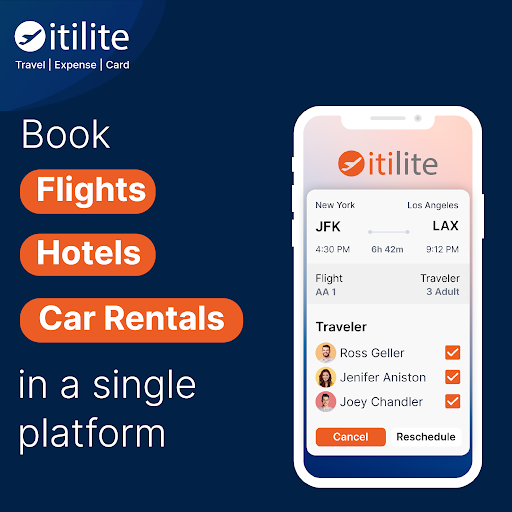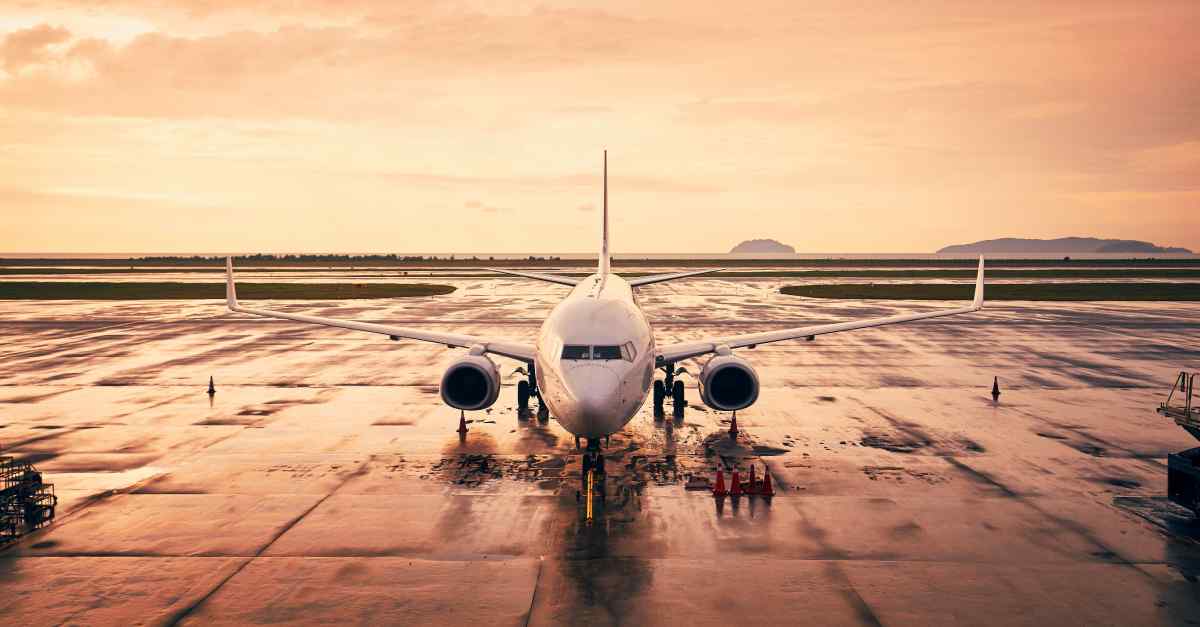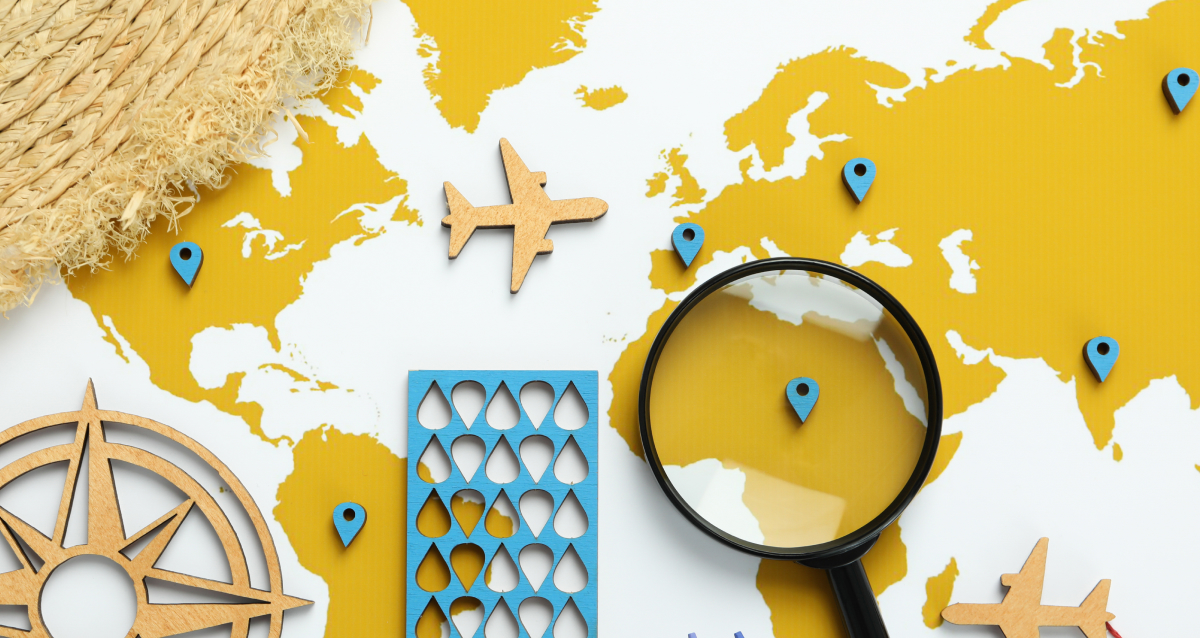
Air travel is an essential part of modern life. It connects people to destinations across the globe. Whether you’re a seasoned business traveler, an adventurer, or someone visiting family, it’s essential to understand the various types of flights. Each flight type caters to unique needs, offering varying convenience, cost, and comfort levels.
For instance, you may need a quick domestic flight for a meeting or a long-haul international flight to explore a distant country. You may be looking for a budget-friendly option or the luxury of premium class. Choosing the correct type of flight ticket can make a world of difference in terms of savings and satisfaction.
In this guide, we’ll explain the different types of flights, helping you make the best choice for your next journey.
10 Different Types of Flights Business Travelers Must Know
Boarding the right flight can make or break your travel experience. So here are the various types of flights you must know:
1. Domestic Flights
Domestic flights are the most common option for travel within a single country. If you fly from New York to Los Angeles, you take a domestic flight. These types of flights are typically shorter. They usually last a few hours and do not involve crossing international borders.
One of the main advantages of domestic flights is their simplicity. You don’t need a passport or have to go through customs and immigration, which makes the process much faster. Ticket prices for domestic flights are generally more affordable compared to international options. However, they can fluctuate depending on demand and the airline.
But, the services offered on domestic flights are usually more limited. With such a flight ticket, economy seating may be more cramped. You might have access to a different range of inflight meals or entertainment than on international flights. For short trips, though, domestic flights are convenient and efficient.
2. International Flights
Unlike domestic flights, international flights cross country borders and connect you to global destinations. Whether you’re flying from the United States to Europe or Australia to Asia, these types of flights open the door to exploring diverse cultures, landscapes, and opportunities.
International flights often include premium services such as multilingual flight attendants, upgraded seating options, and a broader selection of inflight entertainment and meals. However, these flights also have higher costs and more extensive pre-departure formalities. You’ll need to ensure you have a valid passport and visa (if required) and comply with customs regulations at your destination.
Long-haul international flights can be physically exhausting, but choosing the right airline and seating class can significantly improve your experience. Airlines like Emirates, Singapore Airlines, and Qatar Airways are known for their exceptional international services.
3. Non-Stop Flights
If time is your top priority, non-stop flights are your best bet. These types of flights travel directly from your departure airport to your destination without intermediate stops. For instance, a non-stop flight from New York to London saves you the hassle of layovers.
Nonstop flights are particularly beneficial for business travelers with tight schedules or families traveling with young children. They significantly reduce travel time and eliminate the stress of navigating connecting airports or missing layover flights.
However, this convenience comes at a cost. Non-stop flights are usually more expensive than their connecting counterparts. Additionally, these flights may only sometimes be available for less popular routes. Despite these drawbacks, the time saved often justifies the higher price for many travelers.
4. Connecting Flights
Connecting flights involves one or more stops at intermediate airports before reaching your final destination. These different types of flights are common choices for long-haul journeys or routes where direct flights are unavailable. For example, traveling from Los Angeles to Bangkok might involve a layover in Dubai or Hong Kong.
The primary advantage of connecting flights is their affordability. Airlines often offer lower prices for connecting flights. This makes them an attractive option for budget-conscious travelers. Moreover, connecting flights can sometimes offer a chance to explore layover cities if the stopover is long enough.
However, the downside is the increased travel time and the possibility of missed connections due to flight delays. You need to plan carefully, ensuring enough time between flights to account for unexpected delays.
5. One-Way Flights
A one-way flight is a ticket for traveling from your point of origin to your destination without a return journey. This option provides flexibility for travelers unsure of their return plans or moving permanently.
One-way flights are particularly popular among students studying abroad, expats, or individuals on open-ended trips. While convenient, one-way tickets can sometimes be more expensive than purchasing a round-trip ticket. Airlines often incentivize round-trip bookings by offering lower prices, making one-way tickets a costlier option in some cases.
6. Round-Trip Flights
Round-trip flights include both your departure and return journeys in a single ticket. For instance, if you’re flying from Boston to Miami and back, a round-trip ticket covers both legs of the journey.
This is the most common type of flight ticket. This is especially for vacationers and business travelers with fixed schedules. Round-trip tickets are often cheaper than booking two one-way tickets separately. Hence, providing significant cost savings. Additionally, they simplify the booking process, as you don’t have to worry about arranging your return trip later.
The primary limitation of round-trip flights is the lack of flexibility. If your plans change, modifying a round-trip ticket can be expensive and complicated.
7. Charter Flights
Charter flights are privately booked planes that cater to specific groups or organizations. These are different types of flights that do not follow regular airline schedules and are tailored to the needs of the passengers. Corporations, sports teams, and high-profile individuals often use charter flights for convenience and privacy.
One of the significant benefits of charter flights is the ability to customize the travel experience. You can choose the departure time, destination, and onboard services according to your preferences. However, the exclusivity of charter flights comes at a steep price, making them inaccessible for most travelers.
8. Budget Flights
Budget flights, offered by low-cost carriers prioritize affordability by stripping away additional amenities. These flights are ideal for travelers who are willing to compromise on comfort to save money.
Budget airlines often charge separately for services like checked luggage, seat selection, and inflight meals. While this can make the base ticket price incredibly low, the final cost can increase if you add these extras. Budget flights are best suited for short journeys or when travel expenses are a primary concern.
9. Premium Flights
Premium flights provide a more luxurious travel experience with enhanced seating, exclusive services, and priority treatment. These options include premium economy, business class, and first class.
- Premium Economy: Offers wider seats, more legroom, and better meals compared to standard economy.
- Business Class: Features lie-flat seats, lounge access, and gourmet dining, ideal for long-haul flights.
- First Class: Provides ultimate comfort with private suites, high-end amenities, and personalized services.
While premium flights are expensive, they’re worth considering for special occasions or when comfort is a priority.
10. Red-Eye Flights
Red-eye flights operate late at night and arrive early in the morning. These flights are named after the red-eyed passengers who often experience lack of sleep.
Red-eye flights are an excellent choice for travelers looking to save time or money. They are generally cheaper than daytime flights. They allow you to maximize your time at the destination. However, they can be exhausting, especially if you have difficulty sleeping on planes.
Choose The Best Flight for a Seamless Travel Experience
Understanding the different types of flights is crucial for making informed travel decisions. Each option, from domestic and international flights to budget and premium services, caters to unique needs and preferences.
By leveraging the itilite cutting-edge travel management platform, you can streamline your booking experience. You can save time and money, and enjoy a stress-free journey. Let itilite guide you to the perfect flight every time!
Book a free demo now to learn more about itilite.













